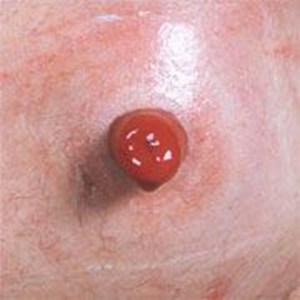Stoma Skin Care
For living with a colostomy, ileostomy or urostomy

For living with a colostomy, ileostomy or urostomy
Having a peristomal (around the stoma) skin complication is one of the most common reasons people living with an ostomy seek medical attention. Urine and feces can be irritating to the skin. If you believe you have a peristomal skin complication, contact your healthcare professional as soon as possible.
If the skin around your stoma becomes damaged, it could be painful and lead to infection. It also becomes more difficult for the skin barrier of your pouching system to adhere to your skin. Prevention is the key to maintaining both healthy peristomal skin and your comfort.
Make note of how your peristomal skin looks when it's healthy. Peristomal skin should look similar to the skin on the other side of your abdomen: smooth and not irritated. Once you know what healthy skin looks like, you can watch for signs of skin irritation.

Healthy Skin

Irritated Skin
